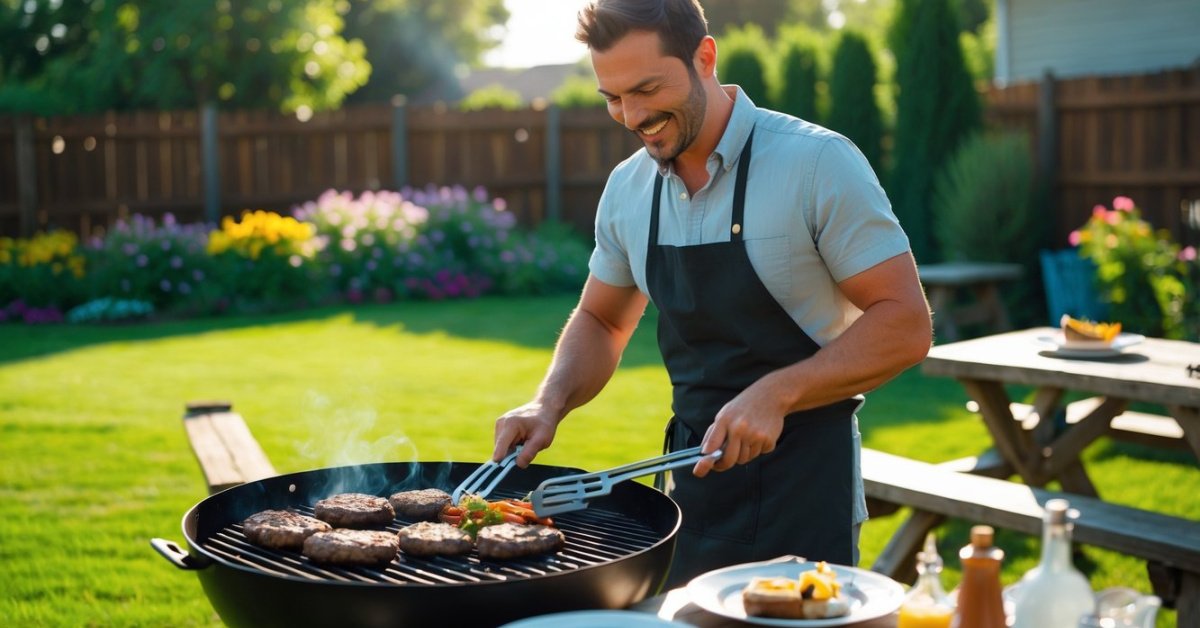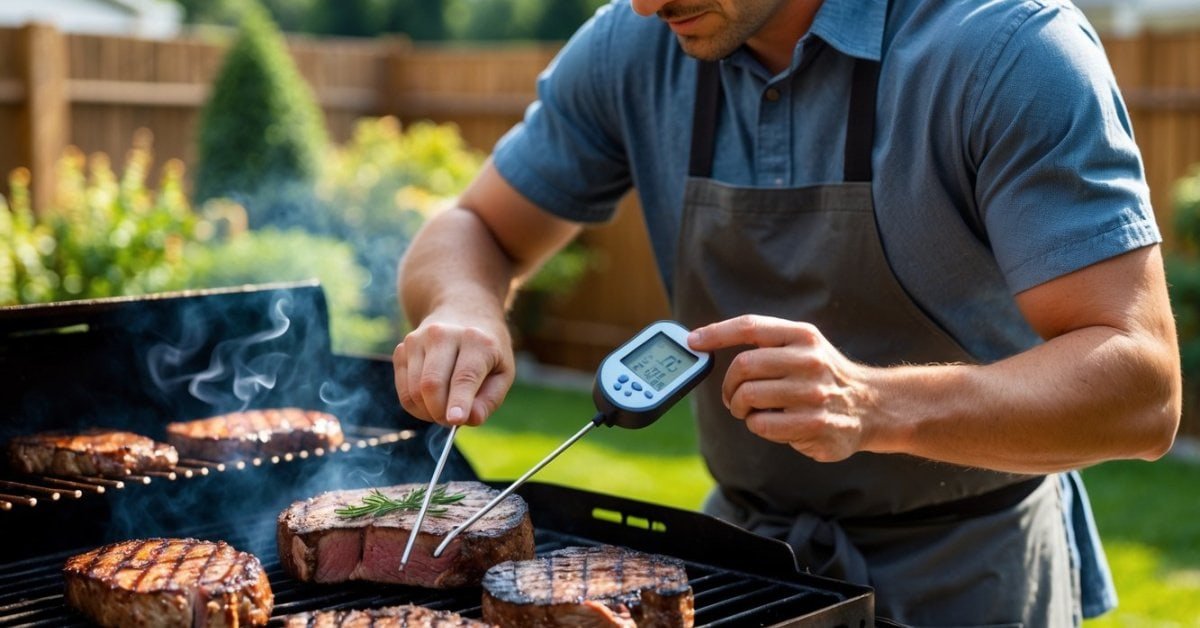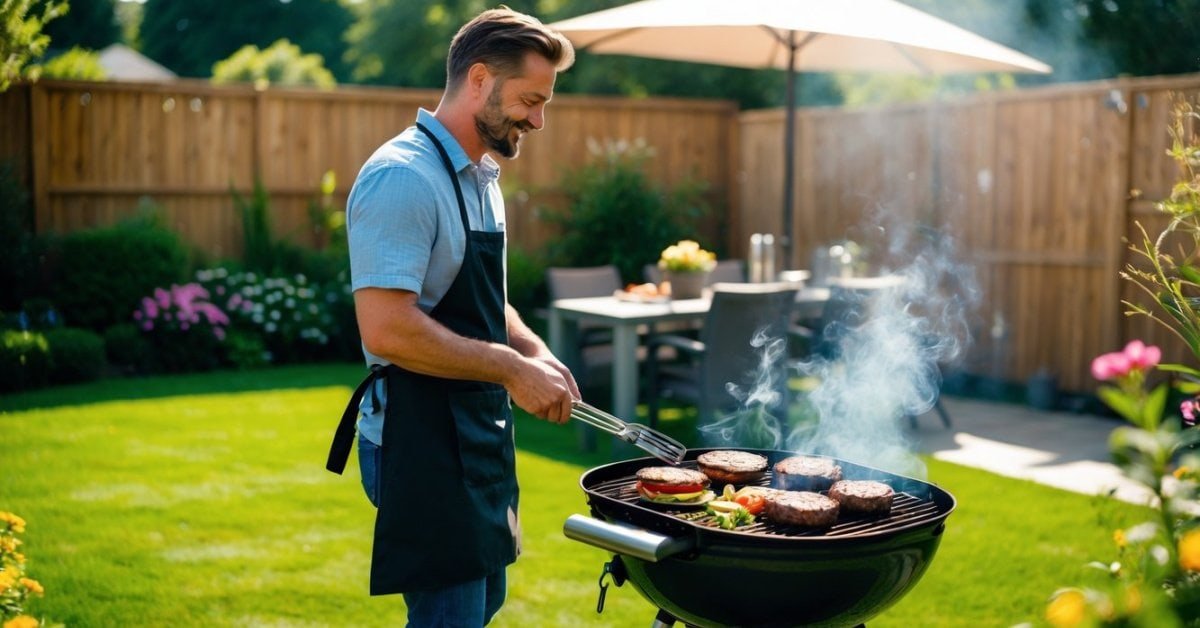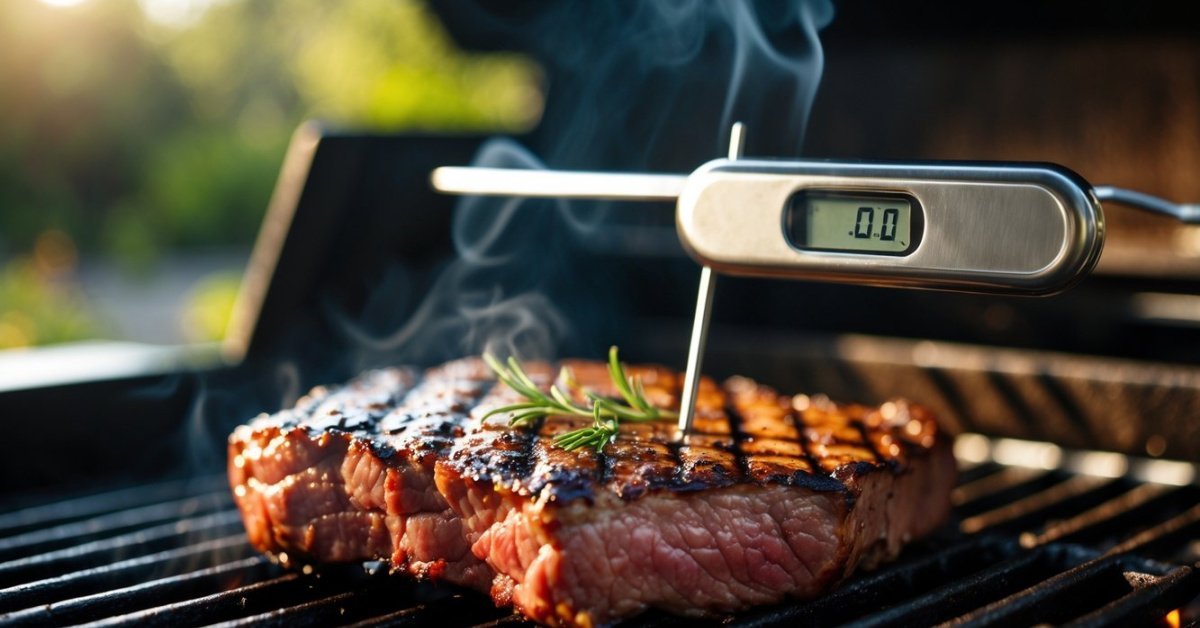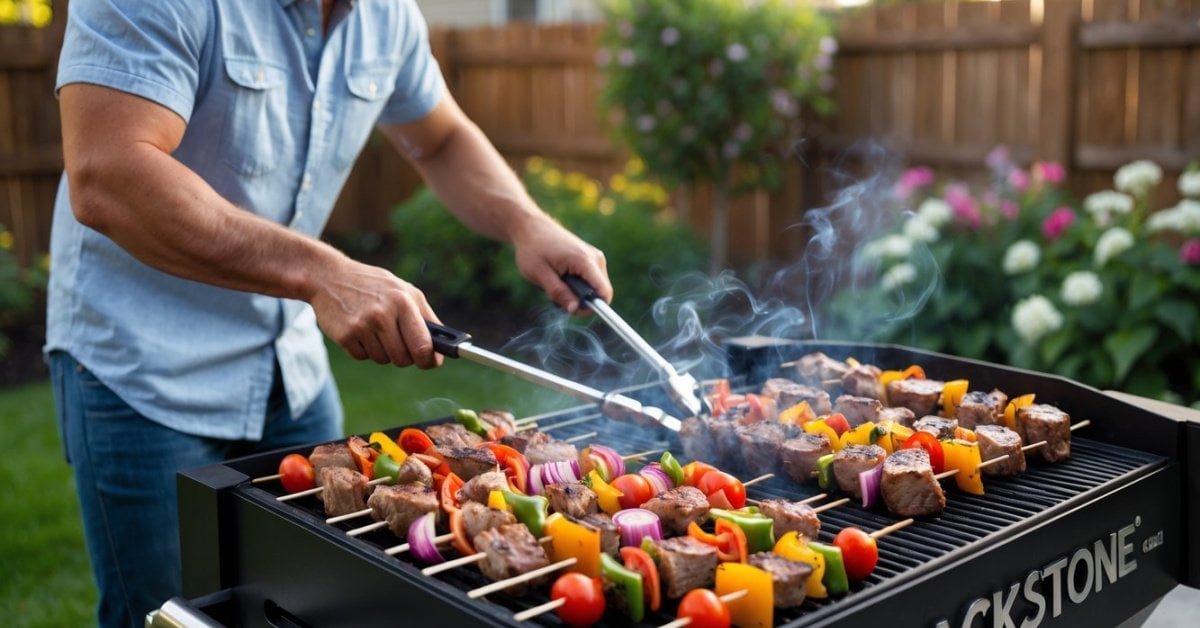Every time I fire up my gas grill I know the secret to perfect steaks and juicy burgers isn’t just in the marinade or the cut—it’s in the temperature. Guesswork can turn a promising barbecue into a dry disappointment faster than I can flip a patty. That’s where a reliable thermometer comes in.
With so many options out there picking the right thermometer can feel overwhelming. I want to make sure every meal I grill is cooked just right so finding a tool I can trust is a must. Let’s explore what matters most when choosing a thermometer that keeps grilling simple and delicious.
Why a Reliable Thermometer Matters for Gas Grill Enthusiasts
Accurate temperature readings make or break grilled food quality. Every time I fire up my gas grill, reliable thermometers show me real-time numbers so I avoid undercooked chicken or overdone brisket. Cheap or slow probes can lag by 20°F to 50°F, which ruins delicate proteins like fish fillets or pork tenderloin. Using a dependable thermometer with fast response times, like a ThermoWorks Thermapen or a Maverick wireless unit, gives me tighter control and less guesswork.
Safe cooking relies on precision. When I ran my Texas bbq cart, local health inspectors checked all my meats with calibrated thermometers. Temperatures above 165°F kept poultry safe, and I only trusted readings from quality instruments. At home, improper readings can mean serving undercooked burgers to friends—a risk I never take.
Consistent grill results depend on repeatable temperature checkpoints. Smoking ribs or brisket low-and-slow means holding the cooking chamber at 225°F to 250°F for hours. I test every new thermometer for accuracy and probe placement, and I record how well they hold up to direct heat, flare-ups, or greasy hands. Reliable gear keeps my smoked meats competition-ready and my backyard bbq stress-free.
Reliable thermometers save money by reducing food waste. Overcooked steaks go straight to leftovers, but with instant temperature feedback, I pull my New York strips at the perfect 130°F. Replacement cuts or ruined meals cost more than a premium thermometer in the long run.
Types of Thermometers for Gas Grills
Different types of thermometers help me control heat and cook quality meals on a gas grill. Each type serves a specific function and fits different grilling styles.
Built-In Grill Thermometers
Built-in grill thermometers measure the grill’s ambient temperature using a probe mounted in the grill lid. Most gas grills include these standard. I check these to monitor zone heat before placing food. Built-in units give general readings, not the temperature at the grate or inside the meat. My experience shows they lag behind actual cooking temps by 10°F–50°F, especially when mounted far from the grates. I replace inaccurate models if my tests with instant-read probes reveal a mismatch.
Instant-Read Thermometers
Instant-read thermometers give fast, accurate readings of food temperature at the thickest part. I use these to check steaks, brisket, and chicken pieces for doneness. Digital models show results in fewer than 5 seconds, using thin stainless-steel probes. Target models from ThermoWorks, Lavatools, and ThermoPro often meet ±2°F accuracy, shown in side-by-side testing. I wipe the probe between uses to prevent cross-contamination. Instant-read models don’t stay in food during cooking but give quick checks when needed.
Wireless and Bluetooth Thermometers
Wireless and Bluetooth thermometers monitor temperature from a distance by connecting probes in the grill to a handheld receiver or app. I rely on these for long cooks, such as briskets or pork shoulders, so I can prep sides or relax while staying informed. Modern versions send alerts if the grill or meat temps drift from set ranges—my Bluetooth set from MEATER tracks both internal food temp and grill temp for up to 165 feet away. Models vary, with some featuring dual or four-probe configurations for multi-zone grilling. I recommend these for multitasking and managing bigger cuts.
Key Features to Consider When Choosing a Thermometer
Reliable temperature tracking drives better grilling results on any gas grill. I focus on these key features each time I test a new thermometer out back, especially when I’m trying out different meats or recipes.
Temperature Range and Accuracy
Thermometer temperature range and accuracy matter most for gas grill enthusiasts aiming for specific doneness. I check that most thermometers cover at least 32°F–572°F—a range broad enough for everything from slow-smoked brisket to seared steaks. For accuracy, I stick to models with an error margin no greater than ±2°F. Models like the ThermoWorks Thermapen ONE give spot-on results during cookouts, minimizing guesswork and keeping brisket safe for serving.
Durability and Build Quality
Durability and build quality affect a thermometer’s lifespan on the grill. I test for water resistance, strong probes, and reinforced housings because spills and heat waves happen often. Stainless steel probes and splash-proof designs, for example, last through daily use and Texas humidity. Features like shatter-resistant screens help thermometers hold up during outdoor BBQ sessions.
Ease of Use and Readability
Ease of use and readability speed up every grilling step. I look for large backlit screens, one-button operation, and clear markings, especially when grilling after dark or when moving fast. Instant-read thermometers with rotating displays make checking food mid-flip simple. Magnetic backs or loop hooks help me store tools within reach during long cooks.
Connectivity and Smart Features
Connectivity and smart features add flexibility for multitasking grillers. I favor Bluetooth or Wi-Fi models, which let me track temperature remotely with phone apps while prepping sides. Smart alerts notify me before steaks overcook. Wireless meat probes like the MEATER+ work great for longer BBQ sessions, reporting live data and providing doneness predictions, making it easier to hit the target temperature every time.
Top Recommendations for Gas Grill Thermometers
Finding the best thermometer transforms the grilling experience, making consistent results standard for every meal. I’ve tested countless options to single out standout models for every budget and grilling style.
Best Budget Option
ThermoPro TP03 Digital Instant Read ranks top as an affordable grill thermometer. I’ve used the TP03 to check burger temps at my old BBQ cart and found its readings land within a consistent ±2°F every time. A large backlit display snaps on in dark conditions, and the 3.9-inch stainless probe folds for easy storage. Expect response times under 5 seconds. For under $20, the ThermoPro offers water resistance and a clear temperature range from 32°F–572°F, which covers all typical grilling needs.
Best High-End Model
ThermoWorks Thermapen ONE stands out as my pick for precision BBQ cooking. When I need steaks just right, I reach for the Thermapen ONE. It delivers +/-0.5°F accuracy, confirmed by my calibration checks, with a superfast read time—almost always within 1 second. Robust IP67 waterproofing protects against greasy spills. The intelligent rotating display works no matter how I hold it, and a battery life of 2,000+ hours lets me grill for months before replacing it. At about $100, it’s an investment, but I still keep the Thermapen ONE in my toolkit for serious sessions.
Best for Tech-Savvy Grillers
MEATER Plus offers full wireless monitoring with no need for messy wires or external receivers. When I’m running multiple recipes or stepping away from the grill, the MEATER app tracks actual food and grill temperatures on my phone from as far as 165 feet away. The guided cook system helps beginners avoid overcooking, while advanced users benefit from dual sensors that read both internal meat and ambient grill temps. The MEATER Plus handles up to 527°F, enough for any steak or brisket. I’ve used it on overnight cooks, relying on the smart alerts to nail perfect doneness.
Tips for Proper Thermometer Use and Maintenance
Avoiding inaccurate temperature readings keeps grilling results consistent. I clean thermometer probes with a damp cloth after every use or after testing multiple foods, using a food-safe sanitizing wipe for extra safety. Moisture, residue, or old grease on probes leads to false readings, so spotless probes matter most.
Calibrating the thermometer guarantees reliable results over time. I check accuracy once a month or whenever I suspect a problem, using the ice water and boiling water tests. For digital models with reset functions, I recalibrate according to the manual—mechanical dial models may need manual adjustment with a calibration nut.
Ensuring proper probe placement promotes the most precise temperature readings. I insert the probe tip into the thickest part of steak, chicken breast or brisket, keeping away from bone, fat or grill grates. Placement near bone or hotspots gives misleading numbers.
Storing thermometers securely extends their life. I protect digital units from moisture and heat, storing them in a dry drawer or pouch away from the grill. I keep batteries out if storing the thermometer for several weeks, since battery corrosion damages sensitive electronics.
Inspecting thermometer batteries maintains functionality. I replace batteries at the first sign of dying or inconsistent readings. For Bluetooth and Wi-Fi thermometers I check the app pairing and update firmware for smooth operation.
Checking for physical damage prevents bad results. I look for any kinks, broken cables, or cracks along the casing or probe after each use—small cracks let in moisture, which ruins sensitive sensors.
Referring to the manufacturer’s care guidelines maximizes durability. Each model has specific cleaning and use suggestions—following them keeps each thermometer type, from instant read wands to advanced wireless probes, performing accurately throughout many seasons.
Conclusion
Choosing the right thermometer might seem like a small detail but it can make all the difference when you’re grilling for friends or family. I’ve found that investing in a reliable tool not only boosts my confidence but also transforms my grilling results.
With so many options out there it’s worth taking the time to find a thermometer that fits your needs and style. Happy grilling and here’s to more perfectly cooked meals every time you fire up your gas grill!

